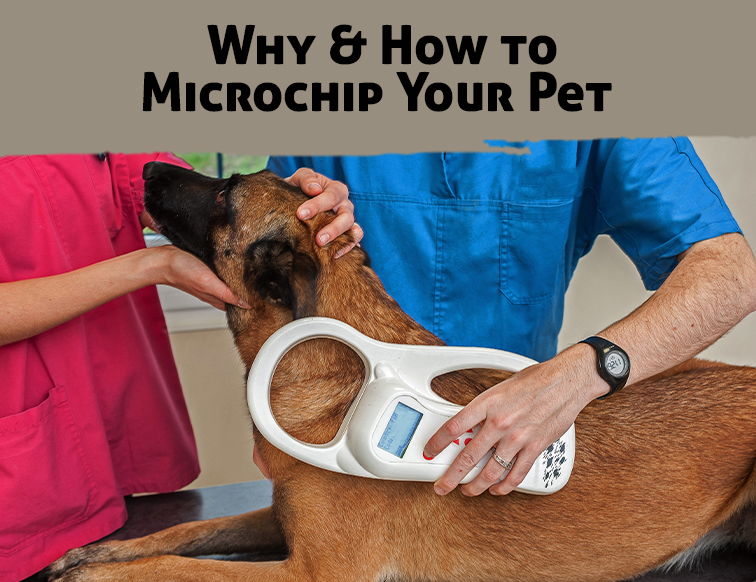Why & How to Microchip Your Pet | National Microchipping Month

June is National Microchipping Month– have you microchipped your pet yet?
Tragically many pets have lost their way back home because they lack the proper identification, and because they cannot communicate verbally, they cannot ask for a way back to their homes. Microchips are made for this exact purpose; these are identification cards for pets. Microchips hold information about you like your name, contact number(s), and address. So, if someone finds your lost pet, they can get the chip scanned and ensure they are reunite with to you as soon as possible. To know how that works, keep reading.
What Is a Microchip?
A microchip is about the size of a rice grain; it is a form of identification for pets. It does not have a battery and is activated by a special scanner, only when it is passed over the area where the microchip is implanted. You need to register the microchip with the National Pet Recovery Database and enter your contact information. Remember to keep your information updated in the registry.
- How is it done?
The procedure is as simple as getting your pet vaccinated and should only be carried out by a veterinarian or a trained person. The chip is injected under the loose skin of your pet, usually between the shoulder blades. This procedure is completely harmless and takes only a few minutes.
- Is it costly?
The cost of microchipping is not high, it is a once-in-a-lifetime payment. If you have adopted your pet from a shelter or purchased from a breeder, chances are they already have microchipped your fur ball. In such a case, you only need to update your information in the registry. If your pet is rescued or doesn’t have a microchip, you can talk to your vet and get the chip implanted.
- Is it painful?
Your pet will not experience more pain than what it feels while having vaccination or an injection. The process is similar to getting a shot, only with a slightly larger needle. If you’re worried that your pet might object to getting the shot, you can get them implanted with the help of anesthesia. It would be beneficial to talk to your veterinarian before deciding on how to proceed for the procedure.
- What is the lifespan of the microchip?
Microchips are designed to last for about 25 to 30 years; so it stays with your pet for lifetime.
How do I Maintain my Pet’s Microchip?
Microchips do not require maintenance. Once your pet is microchipped, there are only three things you need to do:
1) Make sure the microchip is registered
2) Ask your veterinarian to scan the microchip every once in a while to ensure that it is still functioning
3) Keep the information up-to-date
How Does a Microchip Work?
The technology is same as bar codes that are seen on packaged products. Your information is registered on a database with a unique identification number. This identification is given to you at the time of implantation. The microchip remains dormant under the skin of your pet and only activates when it is scanned.
Whenever the microchip is scanned, it transmits the unique ID number to the scanner, through which the vet or shelter can contact you about your missing pet. Using this identification the microchip registry is called to retrieve your information and you’re called to inform about your lost pet.
MICROCHIPS ARE NOT GPS, YOU WILL NOT BE ABLE TO TRACK YOUR LOST PET
Why are Collars and Tags Not Enough?
Collars and tags can break off easily. Even if tags stay, and not renewed, over time they get hard to read. Microchips will identify your pet every time and have no chance of getting cut off. That said, all pets should wear collars and tags containing the pet parent’s contact information.
National Microchipping Month
National Microchipping Month is dedicated to spreading awareness about the importance of microchips. It is all about ensuring that all pets are safely implanted with microchips so they can return to their pet parents if they are lost. This month is also about reminding pet parents that have not yet microchipped their pets, to get it done ASAP.
It has now become mandatory to implant a microchip into your pet. A dog is only exempt from being microchipped if your vet determines certain health conditions in your pet, which can cause complications with the implant.
